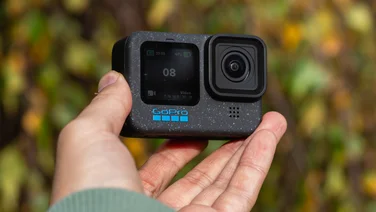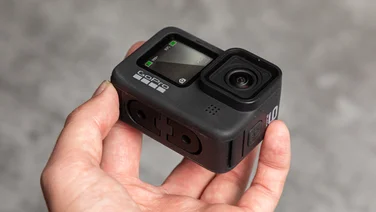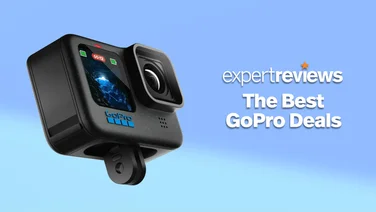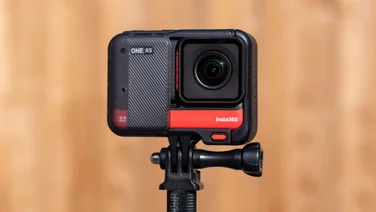To help us provide you with free impartial advice, we may earn a commission if you buy through links on our site. Learn more

The Insta360 One X2 is a tough act to follow. Its predecessor laid the groundwork for a new generation of more accessible, easier to use 360-degree action cameras and it has been hugely successful in the 360-video community since it launched back in 2018.
The introduction of the Insta360 One X forced GoPro to up its game, bringing out the superb GoPro Max in 2019. Now, Insta360 is back with the One X2 and looking to edge in front once more, bringing a host of new features, including in-camera horizon levelling, to the firm’s flagship 360-degree camera.
READ NEXT: The best action cameras to buy
Insta360 One X2 review: What you need to know

Just like its predecessor, the Insta360 One X2 is, essentially, an action camera. It’s designed to capture outdoor adventures and activities just like a regular GoPro, except with the added appeal that you can shoot in full 360-degrees. Then, when you connect it to your phone or download the footage to a PC, you can “reframe” your footage, pointing the virtual camera wherever you like.
Just like its predecessor, the camera captures this 360-degree footage from opposing twin lenses and sensors at up to 5.7k resolution and 30fps and it shares a similar, bar-shaped form factor. The new camera, however, has a number of new features, which I’ll list in brief below.
- A new colour touchscreen which allows you to view 360 footage and frame your shots more effectively
- Video is recorded at higher effective bit rates, up from 100Mbits/sec in H.264 to 100Mbits/sec in H.265
- The camera’s “ambisonic” audio recording is improved
- The camera is now IPX8 rated and waterproof up to a depth of 10m without the need for a case
- Enhanced image stabilisation
- Bigger battery than before, up from 1,050mAh to 1,630mAh
- Improved app with more modes than before
Like other 360-degree action cameras, the Insta360 One X2 can also be used as a regular, wide-angle camera, too, allowing you to shoot hyper-stabilised 1080p or 1440p footage at up to 50fps. The camera also lets you capture time-lapse clips and slow motion footage at 1080p up to 120fps
Insta360 One X2 review: Price and competition
At £430, the chief rivals for the Insta360 One X2 are the GoPro Max, which costs around £425, and the modular One R from Insta360’s own stable. The One R costs around £440 for the twin-lens pack.
The Insta360 One R has the obvious benefit over the One X2 in that it’s modular. Buy the twin-lens unit and you can switch happily between a regular 4K action camera and the more flexible 360-degree module. The battery is a lot smaller, though, and you have to put the camera in a cage to mount it, while the One X2 has a 1/4in threaded mount at the bottom.
Then there’s the X2’s predecessor, the older Insta360 One X. It’s currently available for £399 and will likely fall in price once the One X2 hits retailers, but it doesn’t have the colour screen, has a far smaller battery and isn’t waterproof without a case.
Insta360 One X2 review: Features and software
If you can find the original Insta360 One X at a bargain price, it might not be worth splashing out for the One X2 since it doesn’t improve hugely on its predecessor’s raw image quality.
Although effective bit rates are up, the camera uses the same f/2 lenses and imaging sensors as before, and produces videos and photos at the same resolution and frame rates.
360 video:
- 5.7k at 30fps, 25fps or 24fps (HDR is limited to 25fps)
- 4K at 50fps or 30fps
- 3K at 100fps
Steady Cam (single lens) video:
- 1440p at 50fps or 30fps
- 1080p at 120fps, 50fps or 30fps
Stills:
- Up to 360-degree at 6,080 x 3,040
Videos can be exported from the companion app either as reframed 1080p footage at a bit rate of up to 125mbits/sec or 360-degree footage at up to 125Mbits/sec. If you’re using the desktop app you can output at higher bit rates, up to 200Mbits/sec, and it’s also possible to render to ProRes for the highest quality.
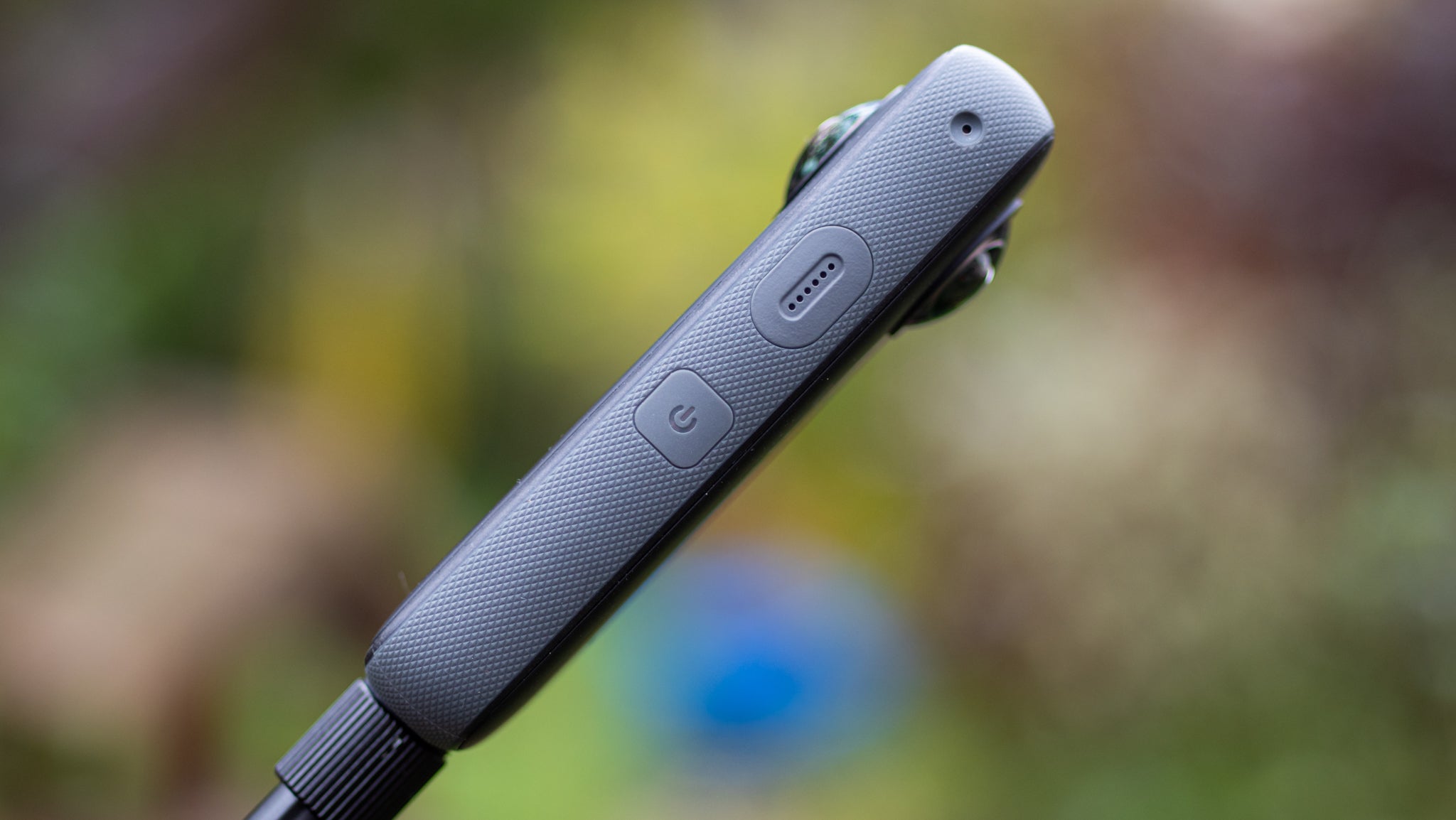
As with previous Insta360 cameras, however, editing is easiest if you stick to the mobile app and it’s there that most of the magic takes place. Reframing, Flowstate stabilisation, object tracking and most other effects are all applied in post after the video has already been captured. The camera itself is responsible for very little other than recording the raw footage, although it will perform horizon leveling in-camera in the single-lens “Steady Cam” mode.
This approach makes a lot of sense and the app does work quite well once you’ve got a hang of the workflow. Reframing is a case of simply adding keyframes as you scrub through a clip’s timeline and there’s an auto mode if you don’t want to edit by hand.
The app’s Stories section lets you assemble multiple clips into one longer shot, and there’s a series of new AI-based special effects that can be applied to shots in the Shot Lab section. Some of these (but not all) are exclusive to the Insta360 One X2, including Shadow Clone and Flash Dash. With the One X2, there’s also a new InstaPano option for stills, which – as you might have suspected – allows you to capture a full 360-degree panorama shot with one press of the shutter button.

Insta360 One X2 review: Samples performance and first impressions
I’ve uploaded a few samples so you can see for yourself how good the Insta360 X2’s footage looks below. Do be aware, though, that 360 clips generally don’t fare well with Youtube’s aggressive video compression, so it’s best to use the reframed clips as a guide to general image quality.
My initial impressions, however, are positive. I’ve not had any big issues with firmware stability, despite the fact that I’ve been testing on pre-launch hardware, and the footage produced by both the app and Insta360 Studio is very impressive. I prefer the output quality to that produced by the One R; details are crisper, colours are bolder and the HDR option can deliver more colour-rich footage than the GoPro Max.

What’s more, the stitching on 360 clips is superb with the camera struggling only when objects get really close to the lens. Anything more than a half metre or so away from the lenses is stitched together pretty much perfectly.
I also found editing clips in the app on my phone far simpler than with the GoPro Max. The horizon lock, in particular, makes it a doddle to produce stupendously impressive clips and the enhanced Flowstate stabilisation smooths out even the most violent of shaking. It even does a good job in fairly low light, although bear in mind that due to the small sensors in the One X2, detail capture in anything but broad daylight will be compromised.
I can’t speak to audio quality in comparison to the original One X because I don’t have one to hand but, if you pick the right setting – audio can be recorded directionally or in 360 – it sounds more full-bodied than on the Insta360 One R but not quite as clear as on the GoPro Max.
Insta360 One X2: Early verdict
I haven’t explored the full capabilities of the Insta360 One X2 yet so I’ll be holding off on giving it my final review score for now. There are also a handful of launch bugs that need working out, but since Insta360 is generally pretty good at providing software updates I’d expect performance to improve markedly over the coming days and weeks.
With what I’ve seen so far I’ve been impressed. Image quality and stitching is excellent, stabilisation is phenomenal and both editing and publishing good-looking videos is made easy by the app.



